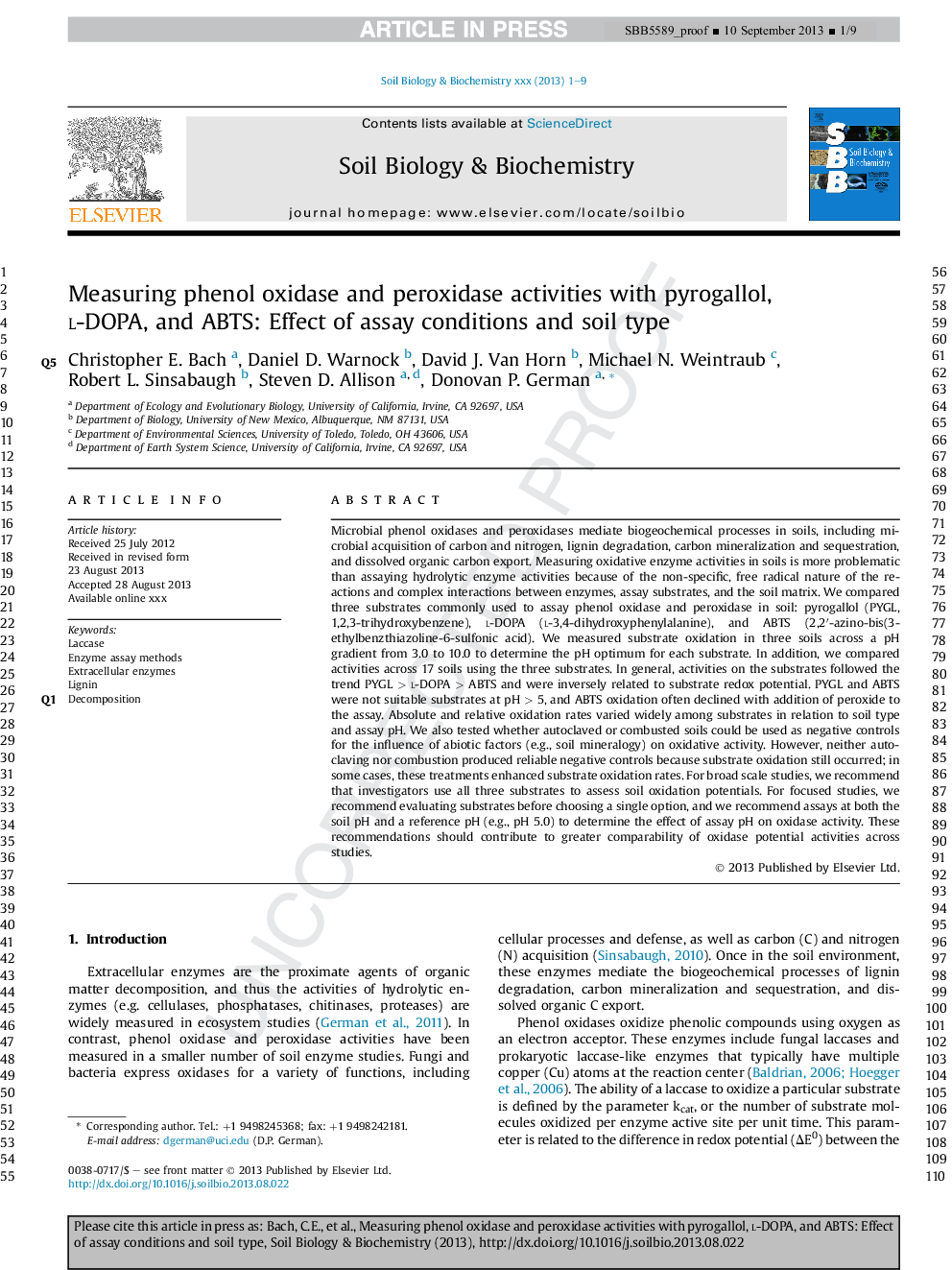| Article ID | Journal | Published Year | Pages | File Type |
|---|---|---|---|---|
| 8365106 | Soil Biology and Biochemistry | 2013 | 9 Pages |
Abstract
Microbial phenol oxidases and peroxidases mediate biogeochemical processes in soils, including microbial acquisition of carbon and nitrogen, lignin degradation, carbon mineralization and sequestration, and dissolved organic carbon export. Measuring oxidative enzyme activities in soils is more problematic than assaying hydrolytic enzyme activities because of the non-specific, free radical nature of the reactions and complex interactions between enzymes, assay substrates, and the soil matrix. We compared three substrates commonly used to assay phenol oxidase and peroxidase in soil: pyrogallol (PYGL, 1,2,3-trihydroxybenzene), l-DOPA (l-3,4-dihydroxyphenylalanine), and ABTS (2,2â²-azino-bis(3-ethylbenzthiazoline-6-sulfonic acid). We measured substrate oxidation in three soils across a pH gradient from 3.0 to 10.0 to determine the pH optimum for each substrate. In addition, we compared activities across 17 soils using the three substrates. In general, activities on the substrates followed the trend PYGLÂ >Â l-DOPAÂ >Â ABTS and were inversely related to substrate redox potential. PYGL and ABTS were not suitable substrates at pHÂ >Â 5, and ABTS oxidation often declined with addition of peroxide to the assay. Absolute and relative oxidation rates varied widely among substrates in relation to soil type and assay pH. We also tested whether autoclaved or combusted soils could be used as negative controls for the influence of abiotic factors (e.g., soil mineralogy) on oxidative activity. However, neither autoclaving nor combustion produced reliable negative controls because substrate oxidation still occurred; in some cases, these treatments enhanced substrate oxidation rates. For broad scale studies, we recommend that investigators use all three substrates to assess soil oxidation potentials. For focused studies, we recommend evaluating substrates before choosing a single option, and we recommend assays at both the soil pH and a reference pH (e.g., pH 5.0) to determine the effect of assay pH on oxidase activity. These recommendations should contribute to greater comparability of oxidase potential activities across studies.
Related Topics
Life Sciences
Agricultural and Biological Sciences
Soil Science
Authors
Christopher E. Bach, Daniel D. Warnock, David J. Van Horn, Michael N. Weintraub, Robert L. Sinsabaugh, Steven D. Allison, Donovan P. German,
